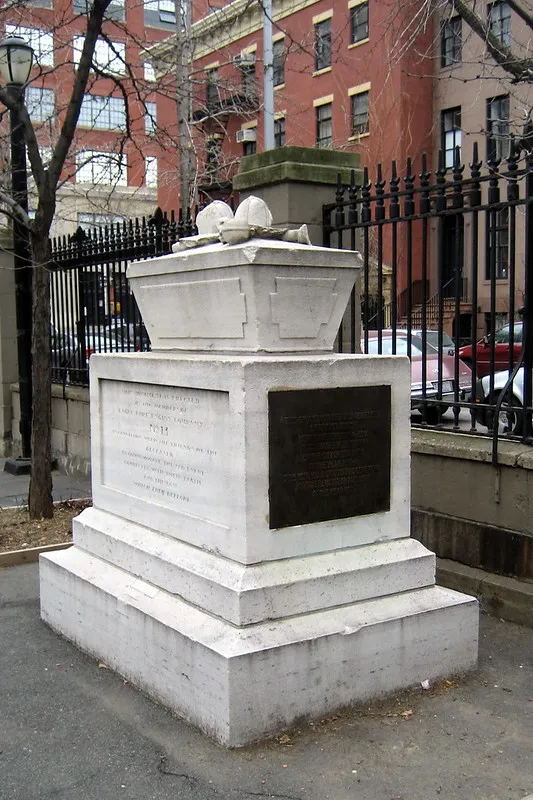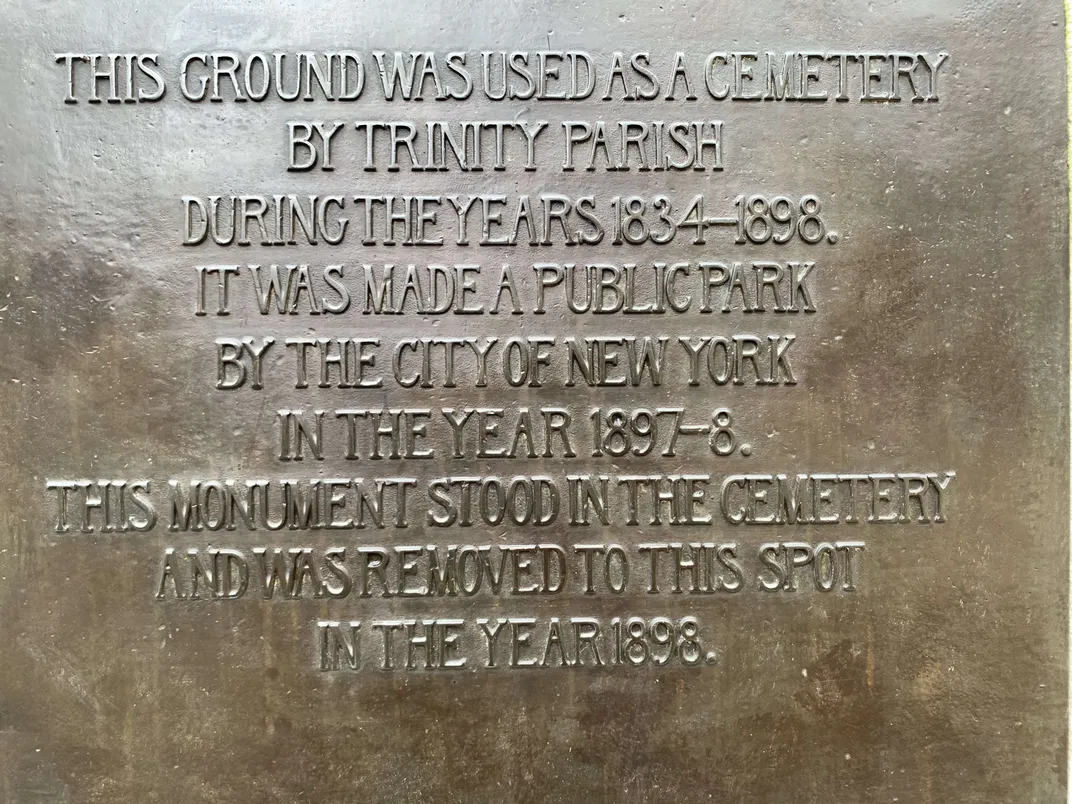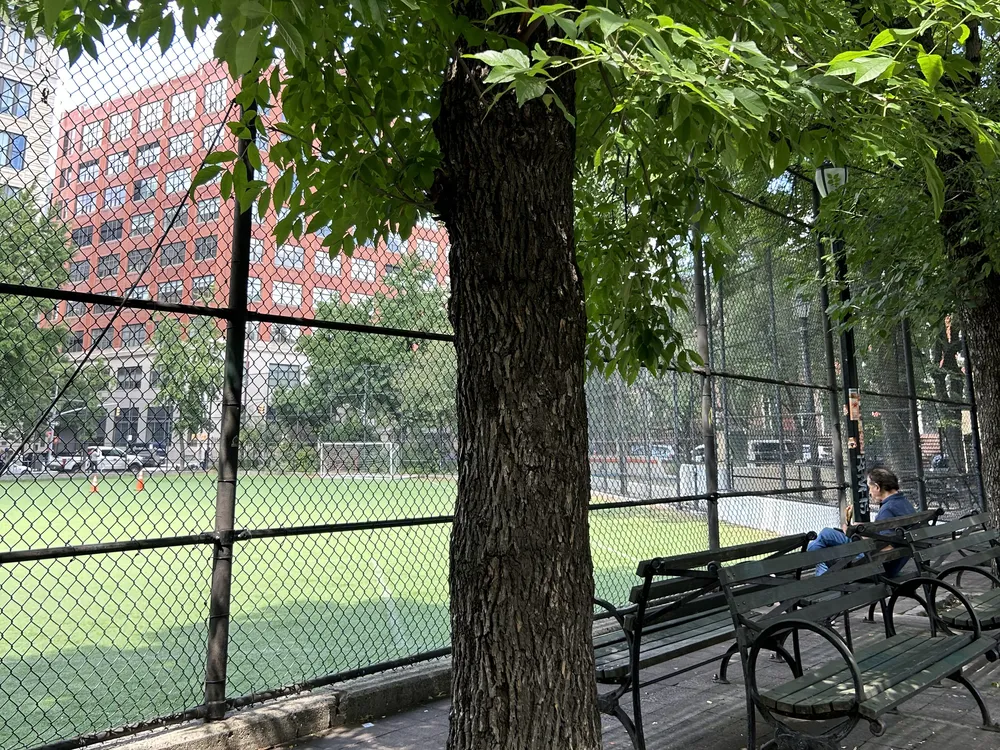James J. Walker Park consists of soccer fields, pickleball courts, playground equipment and a community garden.
Christina Stanton
James J. Walker Park in New York City’s Greenwich Village neighborhood teems with life most warm weekends. Teenagers run for position on soccer fields while couples play pickleball on a nearby court. Children clamber across playground equipment or, in the summer months, cool off in the spray shower. Adults stroll underneath tall trees and through the community garden.
It’s far less lively around the white stone monument near the park’s northern entrance. The roughly seven-by-seven-foot monument, topped with a stone replica of a coffin adorned with firefighting tools, stands as silent witness to a time when this land did not crawl with life. A sarcophagus for two young firemen killed in the line of duty in 1834, the memorial also includes a large plaque affixed to its east-facing side, which says:
“This ground was used as a cemetery by Trinity Parish during the years 1834-1898. It was made a public park by the City of New York in the year 1897-8. This monument stood in the cemetery and was removed to this spot in the year 1898.”
A white stone monument near the park’s northern entrance is a sarcophagus for two young firemen killed in the line of duty in 1834.
Parkgoers who pause to ponder this memorial may find themselves with more questions than answers: This park used to be a cemetery? Are bocce players on the long court bowling over burial sites? Are there graves underneath the jungle gym where those kids are climbing?
The short answer is yes.
A large plaque affixed to the monument’s east-facing side raises a lot of questions. Christina Stanton
As uncomfortable as it may make us today, New York officials in the late 19th century apparently had few qualms about creating a park over a cemetery. At the time, they were looking for innovative ways to provide more green spaces in the city’s crowded neighborhoods, and they determined that a plot of land that had provided the final resting place for about 10,000 souls could be put to better use for its living citizens.
St. John’s Burying Ground, at that point, had been a…
Click Here to Read the Full Original Article at Travel | smithsonianmag.com…
